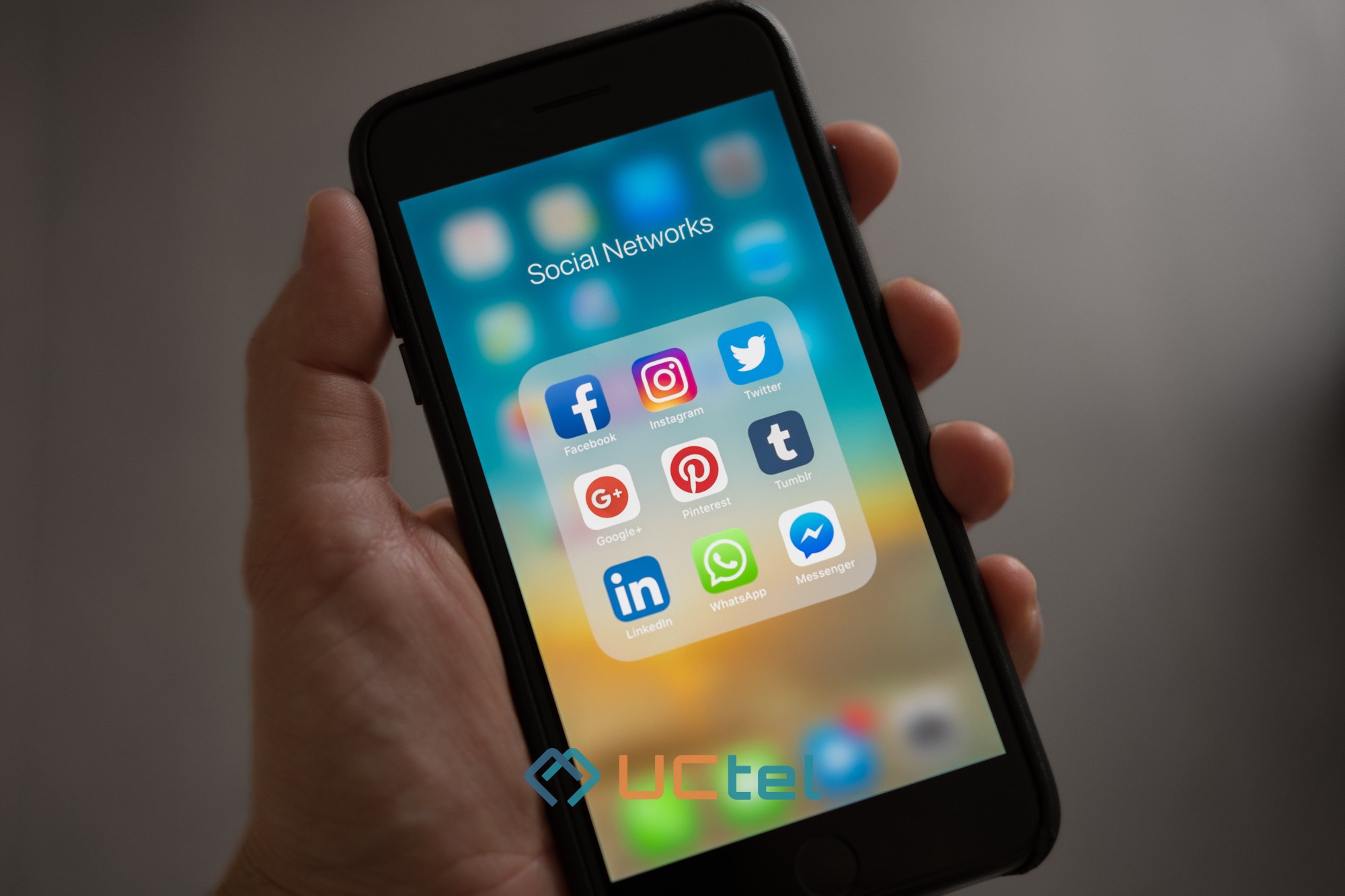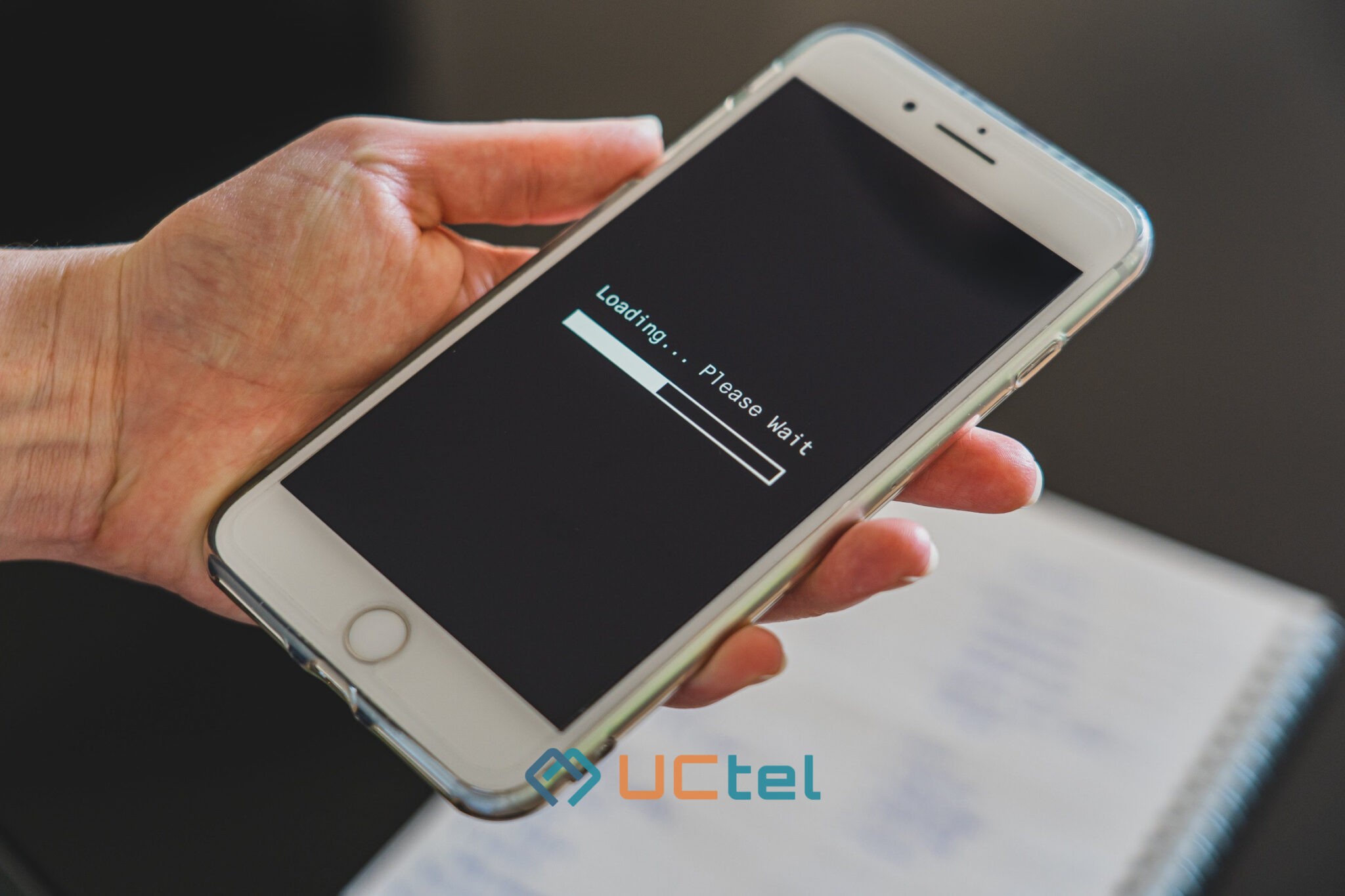
Guide to 5G in the UK: Comprehensive Explanation and Tips for Choosing a Network
Table of contents
- 1. 5G Technology: 12 Facts You Should Know
- 2. How Does 5G Work?
- 3. Advantages and Disadvantages of 5G
- 4. Areas Where 5G Became a Game-Changer
- 5. 5G Coverage in the United Kingdom
- 6. How Do You Choose the Best 5G Network in the UK?
- 7. No 5G or Poor 5G Network Speed in Your Area in the UK? Consider UCtel as Your Trusted Partner
- 8. Conclusion
5G possibilities seem to be a perfect hit: a network that offers enhanced IoT connectivity, immersive AR experiences, and many more. While average UK 5G users are still waiting for its ultra-fast features, businesses already stand to enjoy the benefits of this next-gen technology by implementing private 5G networks.
Right from budding startups to elite businesses in mining, oil and gas, engineering, manufacturing, etc, everyone is beginning to pour their hearts and pounds into 5G technology and robust connectivity. For instance, South London and Maudsley Foundation Trust, a 5G-connected hospital, leverages these network services for their mission-critical operations.
In the context of 5G infrastructure in the UK, there are big players, and then there are big duds. To aid you on your mission to become a brand with the best network connectivity money can buy, we bring to you this comprehensive review featuring everything you need to know about the technology and tips for choosing the right network for your needs. So be sure to stick around.
5G Technology: 12 Facts You Should Know
As with all new technologies, the problem with the 5G network in the UK is that many confuse conspiracy theories and half-truths as facts. Here are 12 incredible facts about 5G in the UK and what lies in stock for your business.
1. In theory, 5G delivers up to 10–50 Gbps, which is over 100 times faster than 4G. In real life, however, 5G speed is 100–500 Mbps. As the UK 5G rollout continues, speed is expected to increase.
2. Typically, standalone 5G is unavailable in the UK and many countries worldwide. It cannot work without 4G and does not offer the benefits of 5G to its fullest capacity.
3. In 2023, Vodafone announced a standalone 5G rollout in the UK for Samsung S22 and Samsung S23 in parts of London, Manchester, Glasgow, and Cardiff. This is severely limited in scope.
4. The UK government alone has invested nearly £200m in 5G coverage. By 2030, standalone 5G wireless coverage is expected to be available in all UK areas.
5. By 2030, it is projected that more than eight in ten of UK connections will be 5G, putting the UK on par with Germany and Japan.
6. Research shows that 5G radio waves (mmWaves) have a peak frequency of 86 GHz, which falls within the radio frequency range and, therefore, doesn’t pose a health risk.
7. The major UK network providers—EE, Three, Vodafone, and O2—offer 5G coverage in the UK already.
8. EE has the fastest 5G mobile network in the UK, while Three is outperforming the network only in some cities.
9. By 2030, 5G will create or transform as many as 4.6 million jobs across all sectors of the UK economy and contribute up to £43 billion to the UK GDP.
10. The cities with the best 5G coverage in the UK are Birmingham, London, and Manchester, in that order. That said, most large cities in the UK offer 5G coverage to some extent.
11. In the long run, private 5G can be a more cost-efficient option for enterprises and large businesses. Companies can build their own private 5G networks, scale end-points, and avoid the massive cost-per-device access associated with public 5G.
12. Customer Market Insights (CMI) forecasts that the private 5G market will hit about $41.80 billion by 2030.
How Does 5G Work?
Similar to 4G technology, 5G works by broadcasting frequencies to mobile devices via cell towers. Typically, these radio frequencies are broken down into spectrums, which are higher for 5G than 4G and other iterations. In simpler terms, your smartphone or smart device receives 5G network signals from masts and other infrastructure. So, provided your phone is 5G compatible, and you’re in the range of a 5G mast, then you’ll have access to 5G.
What is 5G?
In a nutshell, 5G or the fifth-generation mobile technology, is the latest global wireless network after 4G, 3G, 2G, and 1G networks. 5G features a host of new improvements from previous iterations, providing an ultra-fast connection for everyone and everything, including machines, devices, and objects. It uses advanced antennas, higher frequency spectrums, and newer technologies to provide faster speed rates. This solves the problem of demand for data, video, and other multimedia generated by billions of connected devices all over the world.
When we talk about its performance, 5G has ultra-low latency, increased network capacity, and a whole lot of potential around technological advancements, such as the Internet of Things (IoT). 5G network opportunities have opened the door to many possibilities in areas like health, tech, manufacturing, oil and gas, and so much more.
Types of 5G Technology
5G comes in three forms, each with differing characteristics that are envisioned to work together. They include:
- Low band
- Mid band
- mmWave high band
1. Low Band 5G
Low band 5G is the average Joe of 5G that operates on frequencies similar to radio stations and televisions and is the closest spectrum to 4G LTE and 4G. While it doesn’t offer the “ultra” features of 5G, it’s still about 10 times faster than 4G speeds.
Explaining low 5G bands, Ivor Nichols, co-founder of UCtel, tells a story of what he prefers to call the family metaphor. In his words, “Low-band 5G is the child of the family, can travel really long distances but not as fast as other members of the family”.
Typically, it’s lower down the spectrum, sitting comfortably between the 600 MHz to 900 MHz frequency range, with slower speed but better coverage. UK mobile network providers are rolling out low-band 5G much quicker than mid-band and mmWaves. Requiring fewer cell sites and tower masts, it serves users within hundreds of square miles and provides coverage in even rural areas of the country.
2. Mid Band 5G
From the very beginning of 5G deployment in the UK, all four major carriers have been utilising mid-band 5G spectrum between 1 and 6 GHz. Considered a spectrum sweet spot, it offers both broad coverage and fast speeds. Following Ivor Nichols’ analogy, it’s the “uncle” of the family.
Currently, UK carriers are competing for the first brand to deliver mid-band 5G ready for customers, including antenna upgrades and backhaul at thousands of sites in the UK. This 5G type is mostly accessible in the UK’s busy and high-traffic areas — populated cities, shopping malls, stadiums, etc.
3. Millimetre Wave 5G
Characterised by approximately 100 times faster than 4G LTE networks and extremely low latency, millimetre wave 5G facilitates immediate transmission of messages and information. Even at minimal capacity, this type of 5G enables faster downloads, improves access, and powers next-gen applications, thereby making businesses more efficient. In fact, all the hype and news you hear about 5G’s ultra-fast speed and capacity can only be achieved by mmWave 5G’s frequency, which is between 30 and 300 GHz.
This 5G network is great in speed but lacks the penetration abilities of low-band and mid-band 5G. This means it can easily be blocked by objects, buildings, and more, requiring many mobile masts to maximise its potential. Ivor confirms this limitation and also adds that “mmWave’s line-of-sight travel limits how far the frequency can cover. As such, strategically installing it is very important for successful deployment.”
The usual cell tower placement won’t be enough to reach that level. Almost every street lamp will need to be converted into a mmWave tower for the technology to work. However far-fetched this sounds, it’s a dream whose time has come. While mmWave is currently unavailable in the UK, Ofcom has confirmed that it will open the 26 GHz and 40 GHz spectrum bands to mobile technology. Fingers crossed as we await mmWave 5G’s debut into the UK mobile ecosystem.
To summarise, here are the differences between the three types of 5G frequencies:
| Low-band 5G | Mid-band 5G | Millimetre Wave 5G | |
| Frequency | 600–900 MHz | 1–6 GHz | 30–300 GHz |
| Peak Speed (in theory) | 5–250 Mbps | 100–900 Mbps | 10–20 Gbps |
| Average expected speed | 80–150 Mbps | 600–800 Mbps | 1–3 Gbps |
| Capacity | Low | Mid | High |
| Penetration ability | Great | Good | Very poor |
| Range | > 10 miles | 2–3 miles | 50–200 metres |
Advantages and Disadvantages of 5G
Despite being the latest and most advanced stage in the evolution of wireless communication, 5G tech is not without controversy. Like any new technology, it comes with both benefits and challenges. It’s important to be aware of both to get the most out of its strengths and avoid the impact of the downsides.
5G Advantages
- Fast speed: 5G networks can deliver speeds up to 100 times faster than 4G. It means faster downloads, streaming in ultra-high definition, and near-instant access to cloud-based applications, making mobile internet experiences much smoother.
- Low latency: With 5G, latency can be as low as 1 millisecond, compared to 30–50 milliseconds on 4G, which is crucial for real-time applications like remote surgeries or virtual or augmented reality (VR/AR).
- Enhanced capacity: 5G can support high volumes of traffic and maintain consistent performance even during peak usage times, which is essential for densely populated areas like cities, where thousands of users may be streaming, browsing, or using data-intensive applications simultaneously.
- Improved network reliability: 5G provides more reliable and stable connections. The tech offers more consistent service, reducing network congestion and signal loss in crowded areas, urban centres, and remote locations.
- New applications: 5G enables groundbreaking technologies like autonomous vehicles, telemedicine, smart grids, immersive VR/AR experiences, and edge computing, transforming industries and everyday experiences.
5G Disadvantages
- Limited coverage: Though rolled out in many countries, including 5G in the UK, these advanced networks are primarily available in major cities, with rural and less populated areas often lagging behind. Expanding 5G infrastructure across entire countries will take time and significant investment.
- Higher deployment cost: Currently, building a 5G network is expensive. Telecom operators need to invest heavily in new infrastructure, including small cells, base stations, and antennas. This results in much higher service fees for the final user.
- Limited signal range: Despite ensuring faster speeds and lower latency, 5G signals have a shorter range than 4G. The higher frequency bands have difficulty penetrating obstacles like buildings and trees, covering a smaller area and calling for more base stations to maintain coverage, especially in dense urban environments.
- Security concerns: With greater connectivity and more devices linked to the network, the potential attack surface for cyber threats increases. So, ensuring network security and privacy is a more complex process.
As 5G continues to develop and expand, its benefits will likely outweigh the drawbacks over time, shaping the future of digital communication in ways we only begin to imagine.
Difference Between 4G and 5G
5th generation technology differs from its predecessor in various ways. Let’s explore them:
1. Latency
The most important difference between 5G and 4G is latency — the delay time between sending and receiving information. 4G’s average latency is 200 milliseconds, very close to the time it takes for humans to react to visual stimuli pegged at 250 milliseconds. 5G’s latency can go as low as 1 millisecond, which is barely a mini-fraction of a second, thereby reducing the risk of connection interruption. This extraordinary jump will offer a gateway for developing next-generation IoT devices and services.
Using smart cars, for example, latency means the delay between pressing “STOP” and the time the autonomous vehicle actually starts braking. This can mean life and death and will make the concept of vehicle-to-everything possible.
2. Frequency
Another essential difference between 5G and 4G is frequency. Generally, 4G uses frequencies that are less than 6 GHz, while the spectrum of the best 5G networks in the UK can be ≥30 GHz. What does this high frequency mean for your network? 5G mid-band and mmWave support a high capacity for fast data. They’re usually less cluttered, highly directional, and can be used right next to other wireless signals without interference.
3. Speed
When it comes to speed, all types of 5G bands are faster than 4G. mmWave 5G download rates can reach 10 gigabits per second. That’s about 100 times faster than 4G and is ideally the level of performance needed for next-level connectivity. Even as 5G architecture is still unrolling in the UK, its speed is lightning fast, and we expect this to increase in the future.
4. Network Slicing
While 4G networks were mostly made for mobile devices, 5G networks were designed to offer flexible solutions in place of special-purpose networks. Standalone 5G (SA 5G) in its intended form can work as many separate networks. This technology is known as network slicing.
Standalone 5G can be cloud-based or virtual. Generally, many SA 5G network infrastructures are software-based rather than hardware-based. As such, telco providers can create custom slices within the larger network. These slices or autonomous private networks are independent, and every quality, including speed, capacity, coverage, encryption, and security, can be tailored.
5. Capacity
The fourth-generation network lacks the capacity to support many devices in one place. Imagine trying to browse or make a phone call in crowded places. On the other hand, 5G can accurately broadcast and support up to one million devices per sq km.
Want to learn more? Explore our ultimate guide on the difference between 3G, 4G, and 5G.
How Fast Actually is 5G?
We’ve been going on and on about 5G’s speed, but what does it actually mean for your mobile device? We’ll dig deep into real-world examples, but first, let’s go back to the basics.
UK 5G networks must meet certain criteria and rules laid down by governing bodies such as 3GPP and Ofcom to be called 5G. One mandatory specification is speed for downloads and uploads. By law, the minimum peak download speed is 20 Gbps. 5G peak upload speed is 110 Gb/s. Also, latency plays a major role in 5G speed rates. The minimum latency requirement for 5G is 4 ms. However, this could drop to as low as 1 ms in certain conditions.
Every 5G cell tower supports at least one million devices for every sq km. By all standards, download and upload speeds are divided equally between every device on the same tower. Other factors influencing 5G speed rates include your location, your phone’s 5G compatibility, potential interference, and the 5G frequency band.
But, if you were to subscribe to 5G networks in the UK on your mobile device right now, what average UK 5G download speed should you expect? The average speed a user can expect is 450 Mb/s. In real-life scenarios, here’s what to expect if you download a 2 GB video on different network standards:
5G: 23 seconds
Gigabit LTE: 41 seconds
4G LTE: 18 minutes
4G: 27 minutes
3G: 45 minutes
Now that we’ve debunked 5G myths around speed, let’s see what the future holds for industry verticals.
Areas Where 5G Became a Game-Changer
The next step in our guide to 5G in the UK is how it redefines how people, businesses, and enterprises communicate. Industry verticals that will experience major leaps include:
1. Manufacturing
What’s a smart and modern factory without a fast internet connection? Robots and advanced machines used in factories are usually equipped with varying complex sensors connected to analytical predictors on the cloud that ensure streamlined and accurate workflow on the factory floor. Usually, a customised 5G network for manufacturing can be configured to satisfy the company’s capacity, coverage, and network requirements.
With wired connectivity currently being outdated and replaced by cloud connections, 5G will play a huge role by providing an excellent, high-speed environment. An additional factor that makes a 5G factory really cool is its ability to maintain more connections than wired and older wireless counterparts.
You can see how UCtel seamlessly improved the mobile signal of all major UK networks in a Sunderland factory with over 1,300 employees without the need for any wired connections. If your warehouse or factory has connection problems, you need to diagnose the cause ASAP. Some causes of poor mobile signal in your warehouse to look out for include interference, building materials, and more.
2. Healthcare
5G is revolutionising healthcare delivery and promoting telemedicine solutions. Telehealth, a high-resolution video consultation powered by 5G, will enable healthcare workers to handle non-emergency cases online while saving the front door ER for more critical cases. 5G in health also facilitates the IoT possibilities in the industry, including wearables for patient monitoring.
In fact, 5G is expected to provide dependable connectivity, enabling healthcare staff to make informed decisions with little time. As it can transmit large volumes of data within the blink of an eye, perhaps 5G may just be the gateway for remote imaging such as X-rays and MRIs. Mission-critical reasons why healthcare needs reliable mobile connectivity is to identify at-risk patients, make timely decisions, and reduce morbidity and mortality.
London North West University Healthcare NHS Trust, a hospital with poor indoor network coverage, hindering their communication, especially during the COVID-19 pandemic, got timely help from UCtel. We intervened by deploying two signal-boosting solutions, thereby solving their problem.
3. Financial Services
5G will benefit financial services such as banks in the following ways:
- With data transfer speed multiple times faster than 4G, 5G will facilitate cloud computing of financial data and might just put an end to apps, thereby paving the way for the so-called progressive web app (PWA).
- Because 5G can serve about one million users per sq km., there can be an explosion of IoT innovations, with car banking at the top of the list.
- Prompt processing of large volumes of data can enable credit decisions in seconds and not hours or days. The chances of miss-selling will hit an incredible low.
- 5G can boost banking security to an all-time high. Users’ biometric characteristics, such as fingerprint, face, or eye features, once stored in the financial company’s cloud, can be used for logging in.
Here’s a case study where solving the mobile signal problems of a financial company resulted in a significant increase in productivity. Melrose, a leading financial company in the UK, had little to no coverage on EE and Vodafone networks in their new offices. We installed a mobile signal booster, which took their on-site connectivity to another level.
Other industries where 5G can be a game changer include:
- Agriculture
- Transportation and logistics
- Energy
- Automotive
- Retail
- Entertainment
- Education
5G Coverage in the United Kingdom
The United Kingdom is one of the countries where the 5G rollout is serious business. Still, while many network providers have launched the 5th generation technology, it’s yet to envelop every city in the UK. Here’s where we currently are:
1. EE
As Europe’s biggest 4G provider, EE might just be on its way to becoming the biggest 5G provider. EE was the first carrier to launch 5G in Q2 of 2019 and has since then provided outdoor NSA 5G coverage in London, Cardiff, Belfast, Edinburgh, Newcastle, Liverpool, Leeds, Glasgow, Nottingham, Hull, Sheffield, Coventry, Leicester, and Bristol.
We recommend using the EE coverage and network status checker to confirm if the network provider offers any 5G in your area.
2. Three
Three claims to offer the fastest 5G network in the UK, but how true is this? The telco company launched 5G in late 2019 and has since then been able to cover 486 locations, which translates to about 56% of the UK population. They offer phone contracts, SIM-only deals, and Pay-As-You-Go plans for 5G. Some cities with Three 5G coverage include Birmingham, Cardiff, Belfast Bradford, Cambridge, Durham, Coventry, London, Liverpool, and many more.
Double-check your city or town’s Three 5G coverage using the Three Network Coverage Checker.
3. O2
O2 also rolled out its 5G network in late 2019. Currently, the network provider has been able to extend 5G coverage to over 750 UK locations. Remember, the brand merged with Virgin Media in 2021, and up to this day, it has continued to extend its 5G coverage in the country. Check where your city stands with O2 5G coverage using the O2 Network Coverage Checker.
4. Vodafone
Launched in July 2019, Vodafone provides 5G coverage in about 150+ locations in the UK. No matter how limited, the company is making headway with standalone 5G and has conducted trials with 5G in vehicle-to-vehicle communication.
To confirm your area’s Vodafone 5G status, use the Vodafone Network Status Checker.
How Do You Choose the Best 5G Network in the UK?
Interested in faster 5G performance or more data on your SIM-only plan? Find out how to choose the best network for 5G in the UK. Here are factors to consider when choosing the best network for your 5G needs.
1. Coverage
Use the coverage maps above to check the current 5G network status for each network in your area. Also, get reviews from neighbours and friends already using the service on their 5G-compatible mobile devices. If your city or town has 5G coverage, but it shows rather poor performance in your building or office, consider getting a 5G signal booster.
2. Internet Speed
Coverage is usually not enough. You want to be sure that your choice network has enough bandwidth for all your mobile devices. Compare different carriers regarding this aspect.
3. Cost
After determining the networks with the best 5G coverage and internet speed in your specific area, compare their costs. When we say costs, we are not talking about the amount you’ll pay for a 5G-ready device. Other factors that determine price include the smartphone you get with the deal, your upfront fee, and how much data you need.
5G SIM-only deals cost around £5 a month, but not with unlimited 5G data. If you need more data, the fee may go as high as £15 per month.
4. Customer Feedback
Especially if you use 5G for business, we recommend choosing a network provider with good customer ratings and reviews.
No 5G or Poor 5G Network Speed in Your Area in the UK? Consider UCtel as Your Trusted Partner
If your UK 5G network is slow, you’re not alone — our country’s 5G rollout is still at the baby level. However, with UCtel’s 5G mobile signal booster, your business can enjoy a robust and reliable connection any time, any day. At UCtel, our experienced team of telco professionals can quickly figure out your network problems as well as how to fix them. Give your connectivity a leap by contacting us now!
Conclusion
While the UK’s 5G market is slowly growing, there’s no guarantee that it’ll pick up speed to be on par with countries like South Korea, Canada, and the US. As such, the highly competitive global market won’t sit around waiting for the UK rollout to be extensive. Using a mobile signal booster, you can enjoy next-level connectivity and set your business apart in terms of future-forward technological advancements powered by 5G.






